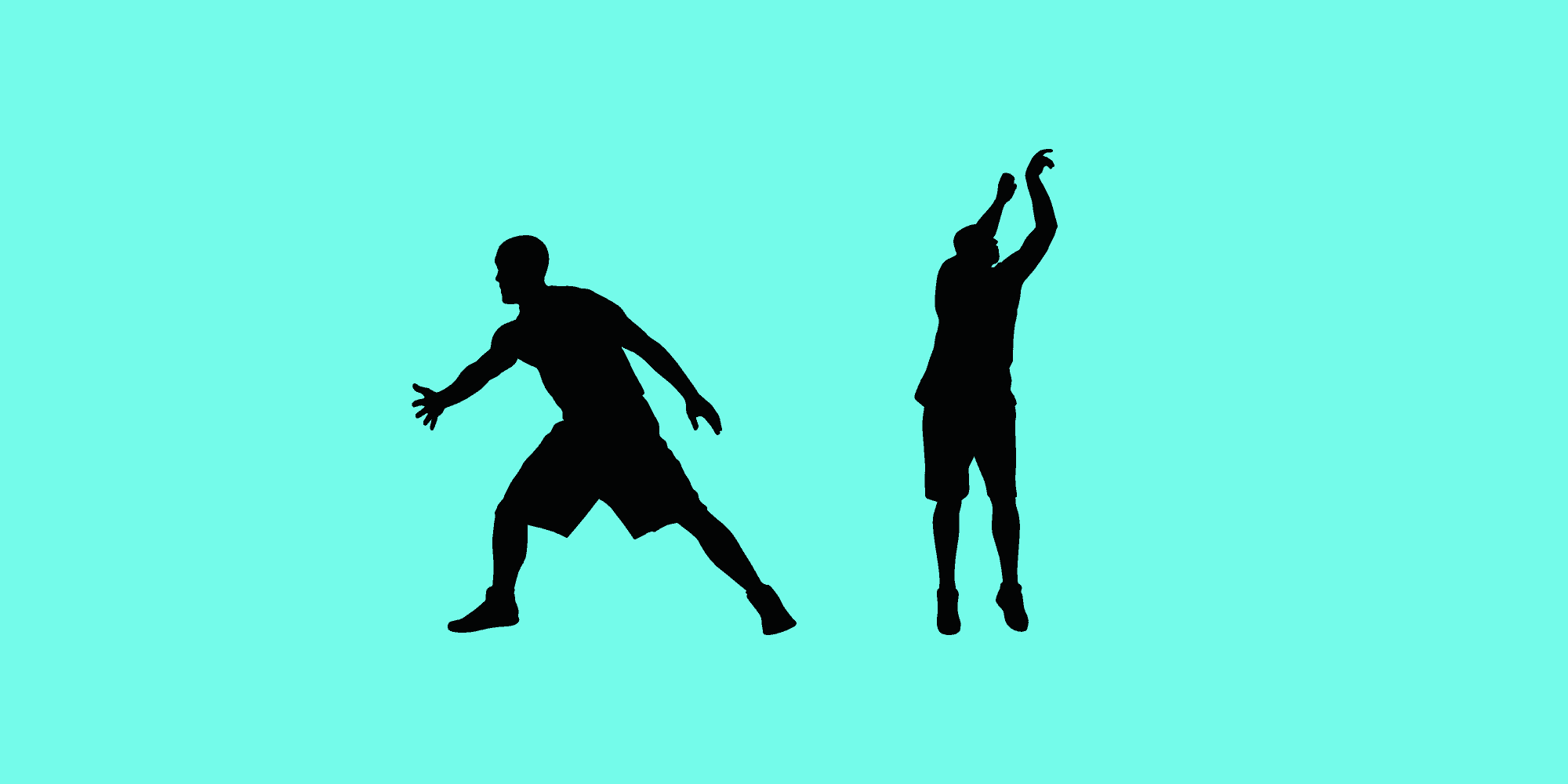Most NBA players never get to be superstars or even stars for their teams. Most of them can hope to, at best, play their careers out as starters on decent teams. You can usually count on the stars to get their numbers, so it’s usually the role players (players with a specific skill/duty) who really swing the outcomes of close games.
Out of all the possible types of role players in the NBA, there is one that is head and shoulders above the rest, the “three and D” player. We’ll go over what a three and D player is and dive deeper into what makes a great three and D player, what makes them so sought after, and who are the NBA’s best ones in recent years.
What Is A 3 and D Player?
As the name itself suggests, 3-and-D players are specialist players that bring two things to their teams, long-range three-point shooting (3) and defense (D). As capable shooters, they stretch the opposition defense, and as versatile defenders, they can switch between defending smaller guards and big men.
You can probably see how important both of those things are in the modern NBA game.
While there certainly are a few players who do offense so well that coaches are willing to tolerate them being defensive liabilities, 3-and-D players are anything but. They are versatile defenders who can guard multiple positions and fit into a switch-heavy system that is almost necessary for having a successful NBA defense these days.
Modern NBA offenses love to take advantage of mismatches through isolations and create open shots through pick and rolls and drive and kick plays. All of those things require great spacing to be truly effective, and that requires shooters with enough gravity for their man to stay with them instead of helping on the ball.
The league’s average three-point percentage hovers around 35%, but that includes all sorts of bad shots. 3-and-D guys rely on others to create looks for them, and most of those looks are catch-and-shoot threes.
These are some of the best long-distance looks you can get, so the bar is higher than usual. The elite catch-and-shoot snipers hit around 40% of their threes, so any decent three and D specialist will have to come close to that number, at least from the corners.
As simple as defending and hitting a few shots may sound, there aren’t that many effective three and D players in the NBA and demand outweighs supply. That’s why such players are always hot commodities in free agency and great trade assets that no team will refuse. However, despite being highly sought after, 3 and D player salaries are significantly lower than salaries of NBA superstars, and typically under $10 million.
What makes a great 3 and D player?
We know the base requirements for a three and D player, so let’s see what a perfect one would look like.
Starting with the first item on any scout’s checklist – size. Big men are eliminated by default since they usually don’t have the agility required to switch onto smaller guards in the pick and roll. That leaves perimeter players, ideally a wing, around 6’7’’ to 6’9’’. That’s enough height to get a shot off over defenders and cause some disruption of defense while staying agile enough to handle switching to both guards and bigs.
Some three and D specialists get tasked with guarding the opposing team’s best player, so the ideal one would have to be a regular candidate for All-Defensive teams. At the very least he’d have to be capable of guarding multiple positions one on one AND capable of defending the pick and roll.
Granted, teams like to defend the pick and roll in multiple ways. Some hedge, some ice, and some switch everything, so a player’s fit on a particular team will depend on the system they run.
Finally, there’s the ability in playing offense. Three and D specialists must be able to hit both open and contested shots at an above-average rate, with anything close to 40% from 3 being truly elite level. That skill alone will earn them their keep on offense, but there’s always value in the ability to attack the closeout.
Turnovers need to be kept to a minimum if you’re a three and D specialist, but that shouldn’t be a problem for most of them since they’re usually not ball handlers.
Overall, you need a team-first player who isn’t afraid to put their body on the line, hustle, and put the outcome of the game above their individual numbers. Even in this age of analytics, such intangibles are highly valued.
Notable three and D players in the NBA
Compared to most of the other specializations in the NBA, the three and D role is a fairly fresh concept. Some of the notable guys who helped establish the concept of three and D players are Danny Green and Robert Covington.
Green’s defense and shooting ability made him one of the key players on the San Antonio Spurs teams of the early 2010s. He even set a record for the most threes in the Finals in 2013, and his contribution was clear to anyone despite his standing in the pecking order being below that of the team’s big three and emerging superstar Kawhi Leonard.
Robert Covington has changed several teams in the past couple of years, but his role was clear on each of them. Some metrics even had him ranked as the league’s most effective specialist several years in a row, but he is now on the wrong side of 30, so some younger guys are bound to overtake him.
One such player is Mikal Bridges of the Phoenix Suns, and he’s almost a perfect fit for our prototype.
Standing at 6’6’’, he’s a bit shorter than you’d ideally like but he more than makes up for it in pure effort. You’ll see him guarding the opponent’s best player on a regular basis, contesting every shot he can and deflecting more than his fair share of balls.
His 42.5% from three last year on 4.4 attempts per game feels surreal and makes him someone you absolutely, positively, cannot afford to leave open or help off of. That kind of gravity is hard to come by for a role player.
Add less than a turnover per game on average to the mix and you get a player that opens up a whole range of possibilities for your team. His Phoenix Suns are currently sitting at the top of the Western Conference, and Bridges is a huge part of their rise to the ranks of the NBA’s elite.
Finally, we can’t forget Klay Thompson. As a superstar, some might argue he isn’t a true 3-and-D player, but the role he fulfills and the way he enables Stephy Curry to play so offensively undeniably fit the bill.

